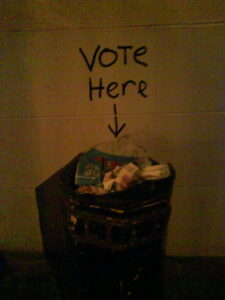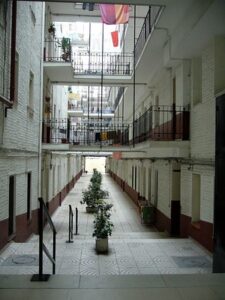Although the Biden administration has not come up with a student loan strategy yet, free community college may give two-year institutions the handicap they’re looking for. The Obama-era Department of Education attempted to hold colleges and universities responsible for the outcomes of their graduates. Schools whose graduates failed to repay their student loans, or who were not able to find gainful employment could find themselves in hot water. That hot water included not being able to offer federal financial aid.
That’s the “nuclear option” for a higher education institution. Without federal financial aid on offer, students who need aid won’t attend. That will raise costs for students who don’t need federal financial aid, so they’ll simply go elsewhere. Unfortunately for community colleges, they already have a higher-than-average cohort default rate on federal student loans.
Which begs a question: why are students who attend the lowest-possible-cost institutions being saddled with student loans in the first place? They attend the least expensive institutions precisely because they have few financial resources. So, they take loans that they “guarantee” with their future earnings.
Borrowing is risky for poor people
Guaranteeing loans with something you don’t yet have is dangerous. It’s dangerous at the institutional level, and it’s also dangerous at the individual level. The difference is that institutions that borrow against their future tax collections have a backstop – the taxpayers. Individuals who borrow against their future earnings have…well… nothing. Unless, at the minimum, they both complete their degree and get a job that pays enough to repay their loans.
For the borrower, the dangers are legion. Thanks to Bush(43)-era bankruptcy “reforms,” student loan debt is more or less permanent. If you don’t graduate, or get a job in your field, or your job doesn’t pay well, too bad. If you get hurt or sick, also too bad. Your loan payment is due on the 5th of each month.
So again, why are we loading up the poorest students with undischargeable debt at all? Community college is supposed to be helping them gain economic traction, not suffocating them with permanent debt.
Free community college is a way to get students into the economy, or farther into the educational system, debt-free. Yet, WCC’s top own administrator (and certain Board members) thought – as recently as 2019 – that free community college was a bad idea. That it might cut into property tax revenues. That putting students in classrooms would somehow harm WCC.
Honestly, WCC doesn’t need administrators who feel this way– or Board members for that matter, but one begets the other.
Free community college programs reveal high demand
In pandemically-informed 2021, free community college is making it rain for two-year schools. Or at least it has the potential to. Two state-funded free community college programs have grabbed the interest of nearly 200,000 Michiganders. That’s 200,000 Michiganders who would have been in community college classrooms had the community colleges worked harder to eliminate students’ costs.
Federal financial aid drives most of these free community college programs. It has been widely available for more than five decades, but community colleges don’t maximize it. Students don’t know about it or know how to access it. Many would qualify for federal and state aid if they knew how to ask for it. They’d also qualify for other scholarships and grants.
The point is that community colleges could make their product free for a lot more people with the tools on-hand. They could sharply limit their risk of high student loan default rates if they didn’t push loans onto poor people. After all, students can’t default on loans they don’t have.
It would take better a financial aid strategy and better student advising. It would also require a commitment from the Administration to make free community college for students work.
Photo Credit: Jib , via Flickr





























